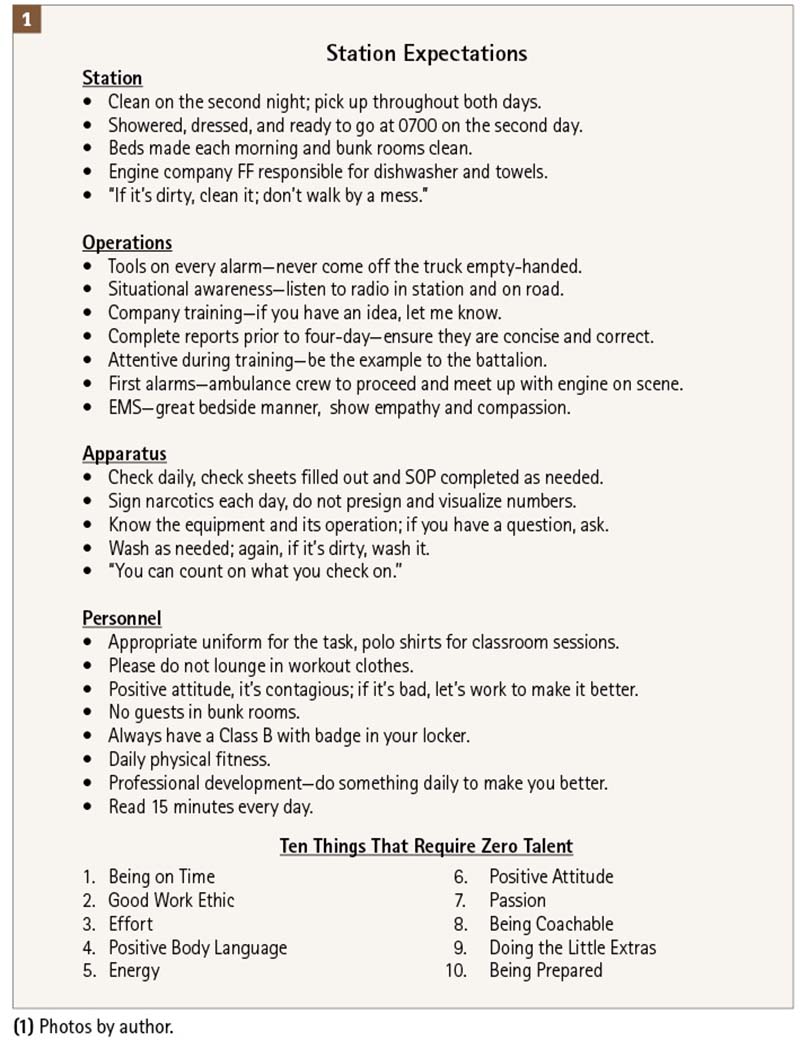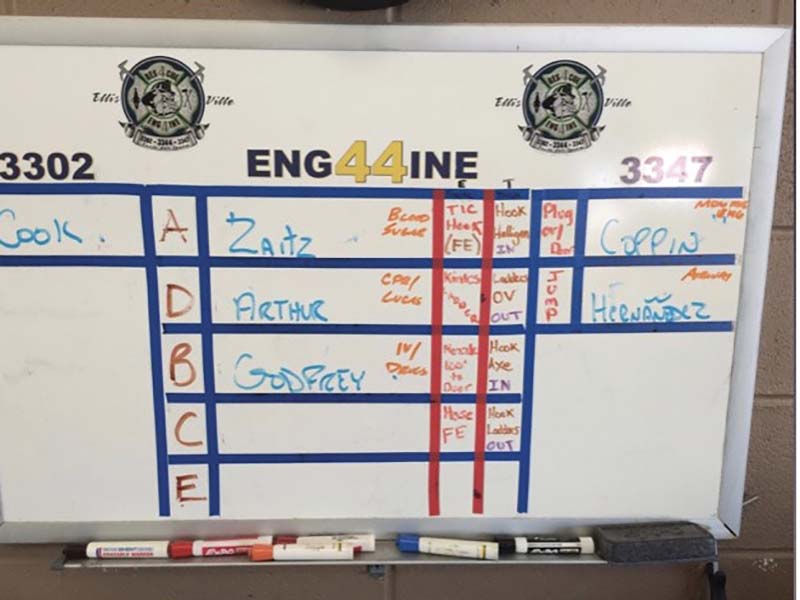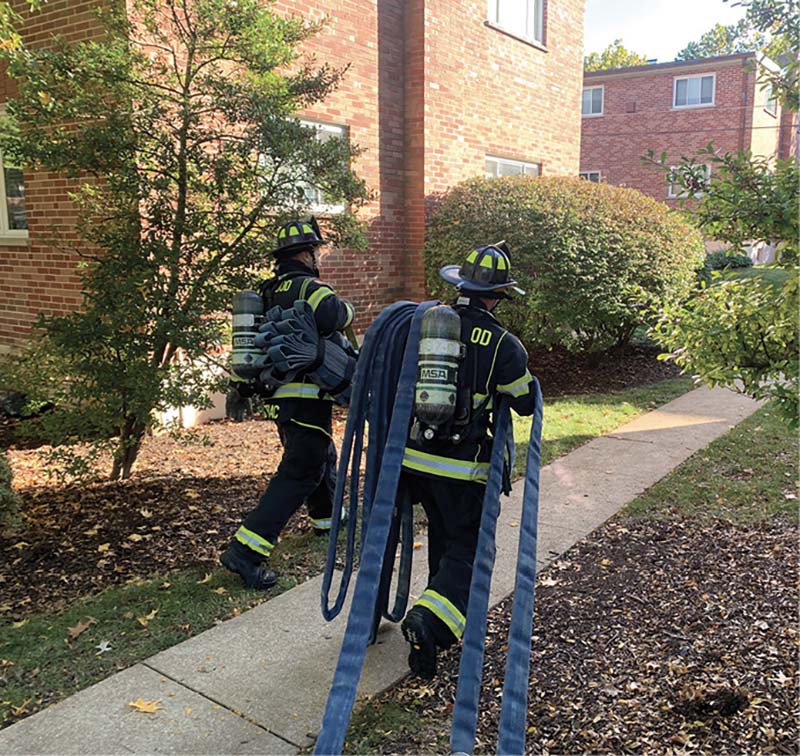The role of the company officer is one of the most critical leadership roles in the fire service. It serves as the link between the fire department administration and the line staff. The company officer is a working boss, taking actions both in the station and on emergency scenes. For this reason, it is also one of the most difficult positions in the fire service. The company officer is tasked with leading a crew of three to seven members, coordinating training, entering records, commanding incidents, and maintaining cohesion and calm in the stations.
- Fire Officer Development: The Morning Meeting
- What Makes a Good Company Officer?
- 101 Drills for the Company Officer
Success does not come easy; it will take effort and work to both be successful and lead a successful company. It is often said we cannot play the game if we do not know the rules; this is true of the fire service and, in particular, the fire station. Clear expectations set the “rules” of the game for the crew. As a company officer, it is imperative that you set expectations early and enforce them equally. Do not take for granted that your company knows what you are thinking or what you expect. Also, ask what your crew expects from you. A dialog of expectations provides for clear work environments and eliminates confusion both on fire scenes and in the station.
As a company officer, I would provide my crew with an expectation sheet on the first rotation of the year. Even if I had returning members, we reviewed the expectations and made adjustments if needed (photo 1). This was also the time that I inquired about their expectations of me and what they wanted to achieve during that year. This was the opportunity to clearly set goals for the year and maintain accountability for the crew.

(1)
In addition, I would hold a daily briefing with the crew; this was informal, typically over the morning cup of coffee. I would set out the activities for the day including any training, public relations events, and standard operating procedures (SOPs) that needed completion. Again, this provided a clear expectation of the day and put everyone on the same page as to what was expected. It also allowed time for members to add anything. Remember, as a company officer, you are tasked with completing assignments and duties; however, it is not a dictatorship. Providing your members with a chance to get involved or complete minor personal assignments such as go to the grocery store, stop at a bank, and so on, will create a greater buy-in than being autocratic with the time.
Riding boards or daily assignment boards also reinforce daily expectations. They are great both for accountability and for information transfer at the station (photo 2).

(2)
Value and Training
So, now we are at work, but why? I know, to run fires, collect a paycheck, and enjoy long periods of time off. On the surface, this sounds true; however, if this were true, morale would be high and we would never have any issues in the stations. As we drill into why morale gets low and members get upset, we need to drill into the core of human nature. Here, we will find what drives our members: value.
We often say that the highest morale in the station is after a fire or successful alarm. We often think it is because we did our job. Although this is somewhat true, it is really because we were provided the opportunity to show value to our community, our crew, and ourselves. Maslow provided the model: Humans need to have self-actualization; this is achieved by opportunities to provide value and feel valued. Valued members will create synergy that cannot be broken in the company environment and will have high morale.
With limited opportunities for alarms to have this value-added feeling every day, we must create artificial opportunities for our members to provide value. This can be done through leading company-level training. High-impact, quality training events that allow members to be successful and achieve their goals will enhance the overall team and allow for that valued-added feeling. Doing these activities daily will allow members to both feel valued and provide value, which, in turn, will lead to higher morale and less complaining and take your company from a crew to a team.
Make company training a routine part of every day. That said, it does not need to always be led by the company officer. The key to any training is to ensure it makes an impact. The best means to accomplish this is to ensure there is a clear objective based on a job performance requirement, standard, or SOP.
In addition, training does not need to be a two- to four-hour event. Some of the best training sessions are 15 to 30 minutes. One of the tactics I would use as company officer was the 4 × 15 training concept: Conduct four small trainings, 15 minutes each, throughout the day. I know what you are thinking: Training all day? That will never work.
Here is how it would go: Start the shift out with photos, video, or SOPs; this was generally before the day got started and as crews were getting briefed on the day. This was a twofold win: It got everyone in the mindset that they are at work and refocused on being a proficient firefighter. It was also a great opportunity to start a discussion on fires and get off the discussion of politics, money, marriage, and every other thing that should not be topics at the kitchen table. This discussion was around 15 to 20 minutes.
As we would check the apparatus, we would take time to either go over a tool, pull a hoseline, or operate a system on the apparatus such as the light tower, ground ladders, or the foam system (photo 3). We were already at the truck focused on the apparatus, capitalizing on this time and enhancing the check. Again, this only added an additional 15 to 20 minutes to the truck check.

(3)
As we would go through the day, I would throw out a “What would you do?” This might be video simulation, a picture of a home, or even a call that was run by a previous crew. This typically occurred around lunchtime.
As the day wound down, either during or after dinner, I would review an SOP or discuss construction or fire behavior. These are great topics to start conversations and would go anywhere from 15 minutes to three hours, depending on the topic. Again, this engaged the crews but, more importantly, it got them thinking about being firefighters. The benefit of the 4 × 15 concept is that it injects training/discussion throughout the day and reminds crew members that they are on-duty and at any time could get called to go to work as firefighters.
Ownership and Leadership
Doing these things is all about ownership and leadership, two buzzwords in the fire service and two key elements for fire officers. Ownership is all about owning everything. What does that look like? As a leader, you need to own your mistakes. As a company officer, even a great, veteran company officer, you will make mistakes. Own them! The worst thing a company officer can do is blame or shift a wrong to others, so own it.
Also, when your crew makes a mistake, it is your mistake. You must own your crew, the good and the bad. Individuals want to be part of something bigger. That something bigger is the crew environment, the team. The company officer, as the team leader and “owning” the team, acts the same as a manager who “owns” a professional sports team. You must reinforce the good and correct the bad. Provide accolades for good works. Brag about your crew and exploit their efforts. Just the same, you need to fix the problems and provide solutions to improve. Again, this is often done by providing quality opportunities and trainings that develop the crew to be successful both individually as well as to the organization.
Above all, stay positive! Negativity breeds negativity and becomes contagious in the station and among the crew. The power of positivity can be seen in how your members act and handle themselves. Positive people will always do more than expected and are generally happier workers. Focusing on the good and not the bad, deflecting negativity, and promoting positivity will enhance operations and lead to improved morale within the station.
Company officers have one of the most rewarding and difficult roles in the fire service. They are the true oars of the organization. If they are not rowing in the right direction or are rowing in multiple different directions, the organization will either circle or go backward. For this reason, company officers must be successful, lead at the highest level, and promote positivity within the organization to keep the organization on a pathway to success. Remember why you promoted, and be the company officer your crew and organization need.
Brian Zaitz is assistant chief of operations & training for the Kirkwood (MO) Fire Department with 21 years of service. He has an associate of applied science degree in paramedic technology, a bachelor of science degree in fire science management, and a master’s of science in human resource development and is a graduate of the National Fire Academy’s Executive Fire Officer Program.

